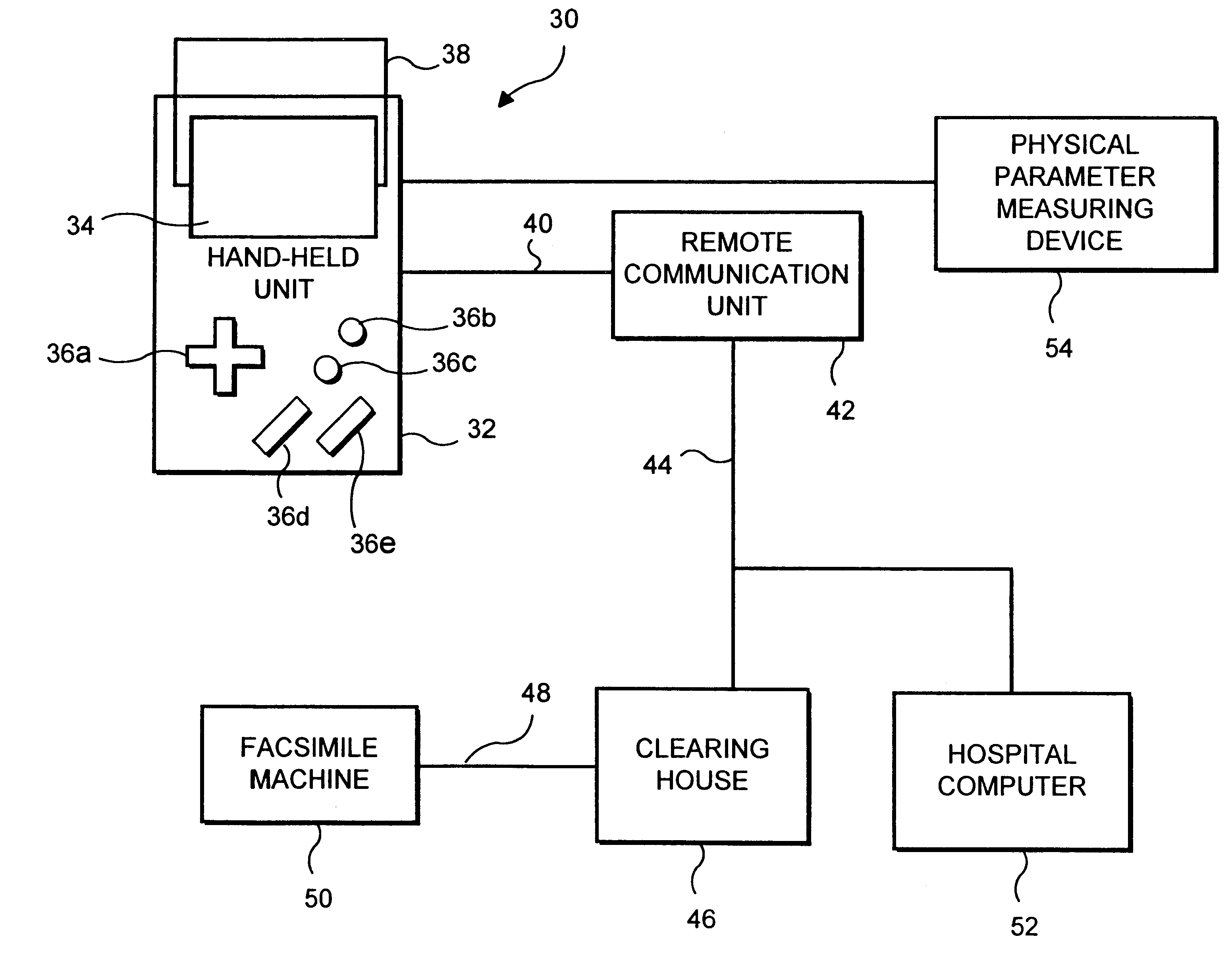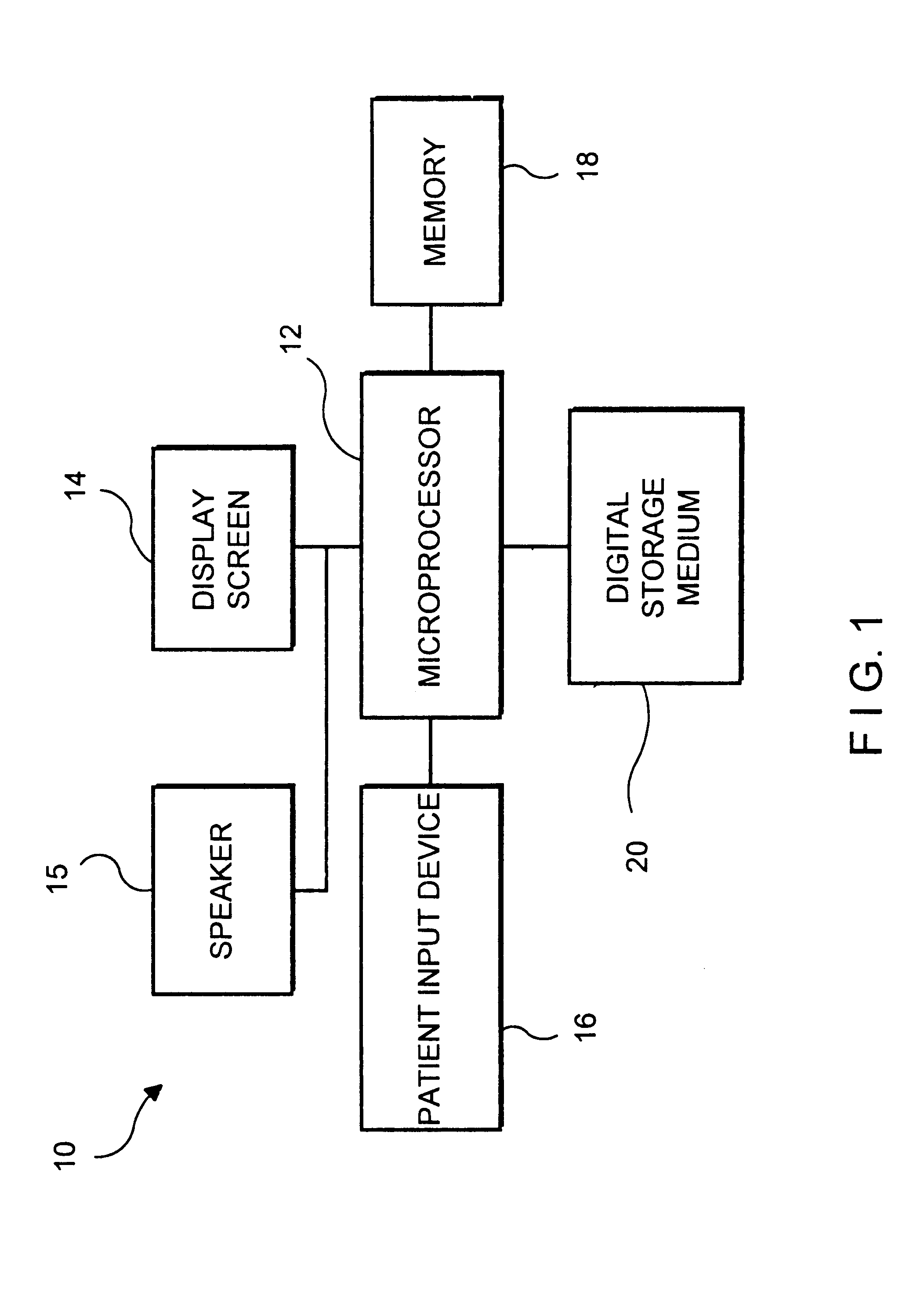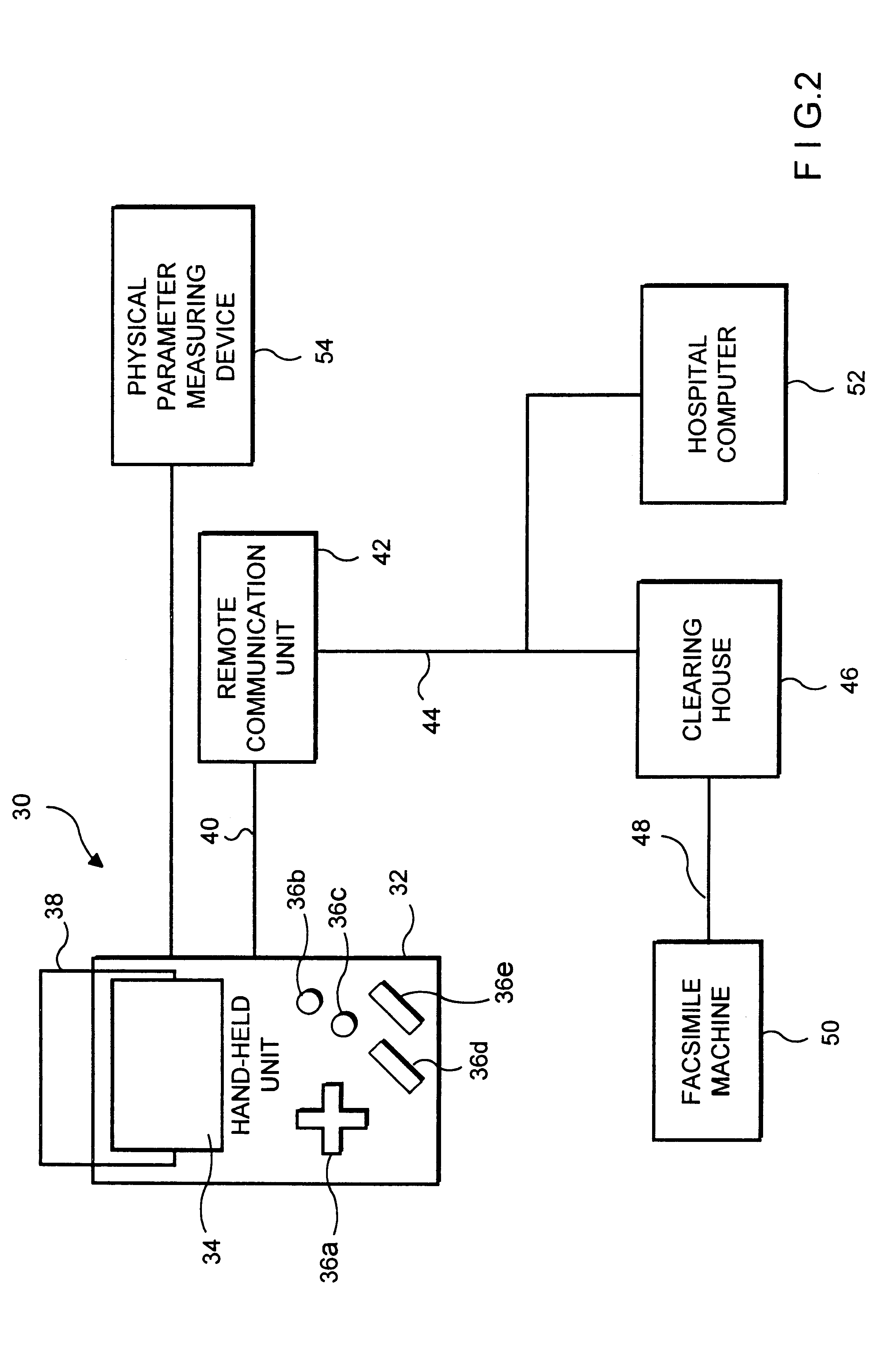Method for diagnosis and treatment of psychological and emotional conditions using a microprocessor-based virtual reality simulator
a virtual reality simulator and psychological and emotional technology, applied in the field of psychological and emotional conditions diagnosis and treatment using a microprocessor-based virtual reality simulator, can solve the problems of not being able not being standardized, and often not being able to be used to make meaningful case comparisons, so as to reduce the cost of diagnosis and treatment
- Summary
- Abstract
- Description
- Claims
- Application Information
AI Technical Summary
Benefits of technology
Problems solved by technology
Method used
Image
Examples
example 2
GROWTH DISORDER
The physician diagnoses the patient with a growth disorder, such as Turner's Syndrome or a similar condition, requiring growth hormone treatment and a psychological treatment strategy for helping the patient to cope with his or her condition. By following a selection process similar to the one indicated in FIG. 5, the physician prescribes a virtual reality simulation combining self-awareness training, self-efficacy, role playing, counseling and competition.
In an illustrative virtual reality simulation program, a 3-dimensional graphical character, Packy, is a young elephant who, like the patient, is on growth hormone therapy. The simulation consists of three parts, each associated with a particular aspect of the treatment. In the first part, Packy encounters obstacles which he must surmount. In the second, Packy has to learn about growth hormone injections; and, in the third, he has to keep a personal growth diary.
In the first part, Packy learns about things that grow,...
example 3
DIABETES
The patient is diagnosed with insulin-dependent diabetes. As treatment, the physician prescribes insulin shots and a virtual reality simulation based on positive-reinforcement and self-management. In the virtual reality simulation, the 3-D game character is a pilot who has diabetes, just like the patients. The pilot needs to follow a proper diet and exercise regimen in order to avoid crashing a plane or balloon which he is flying. Illustrative displays for the simulation are shown in FIG. 8 and FIG. 9. Eating wrong foods may cause blood glucose levels to increase, and the plane or balloon starts gaining altitude uncontrollably. Eventually, above a certain threshold, the balloon or plane spins out of control.
During the simulation, the patient is requested to enter his own blood glucose level by using blood glucose meter 54. An exemplary set-up for doing this is shown in FIG. 10. The reading is used in the simulation and can also be transmitted to the hospital, as described in...
example 4
NONINSULIN DEPENDENT DIABETES MANAGEMENT
A virtual reality simulation treatment can be used for management of noninsulin dependent cases of diabetes (NIDDM). In such cases, the simulation is an interactive information resource, as well as a role-playing game. The simulation helps the patient, especially an adult patient, explore the topic of Staged Diabetes Management. The information could be presented in hypertext format, allowing the patient to select a stage, read a brief overview of it, and select details to examine it in greater depth. The simulation encourages active involvement in learning and provides opportunities to rehearse various health behaviors and see the consequences that result by observing what happens to a 3-D game character who displays these behaviors.
The contents of the simulation may be based on the Staged Diabetes management program, developed by the International Diabetes Center and Becton Dickinson & Company. The progressive set of stages ranges from least...
PUM
 Login to View More
Login to View More Abstract
Description
Claims
Application Information
 Login to View More
Login to View More - R&D
- Intellectual Property
- Life Sciences
- Materials
- Tech Scout
- Unparalleled Data Quality
- Higher Quality Content
- 60% Fewer Hallucinations
Browse by: Latest US Patents, China's latest patents, Technical Efficacy Thesaurus, Application Domain, Technology Topic, Popular Technical Reports.
© 2025 PatSnap. All rights reserved.Legal|Privacy policy|Modern Slavery Act Transparency Statement|Sitemap|About US| Contact US: help@patsnap.com



